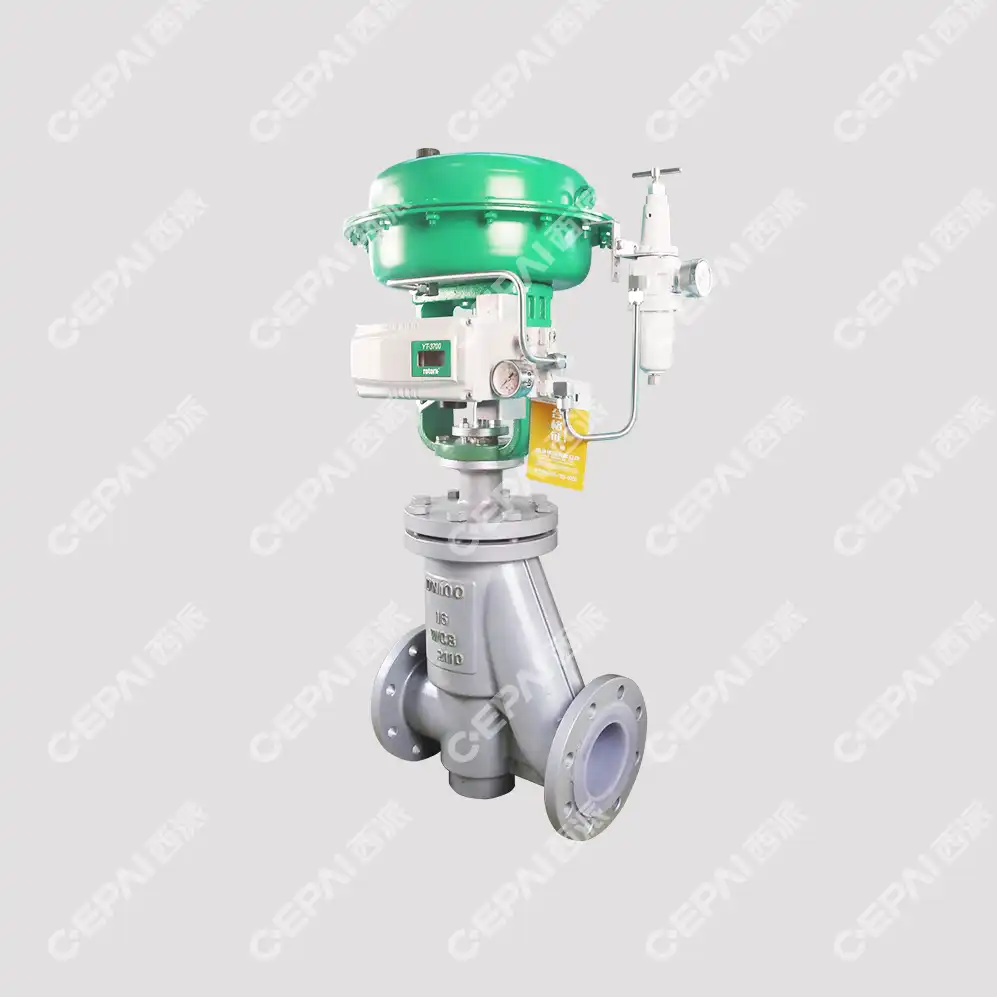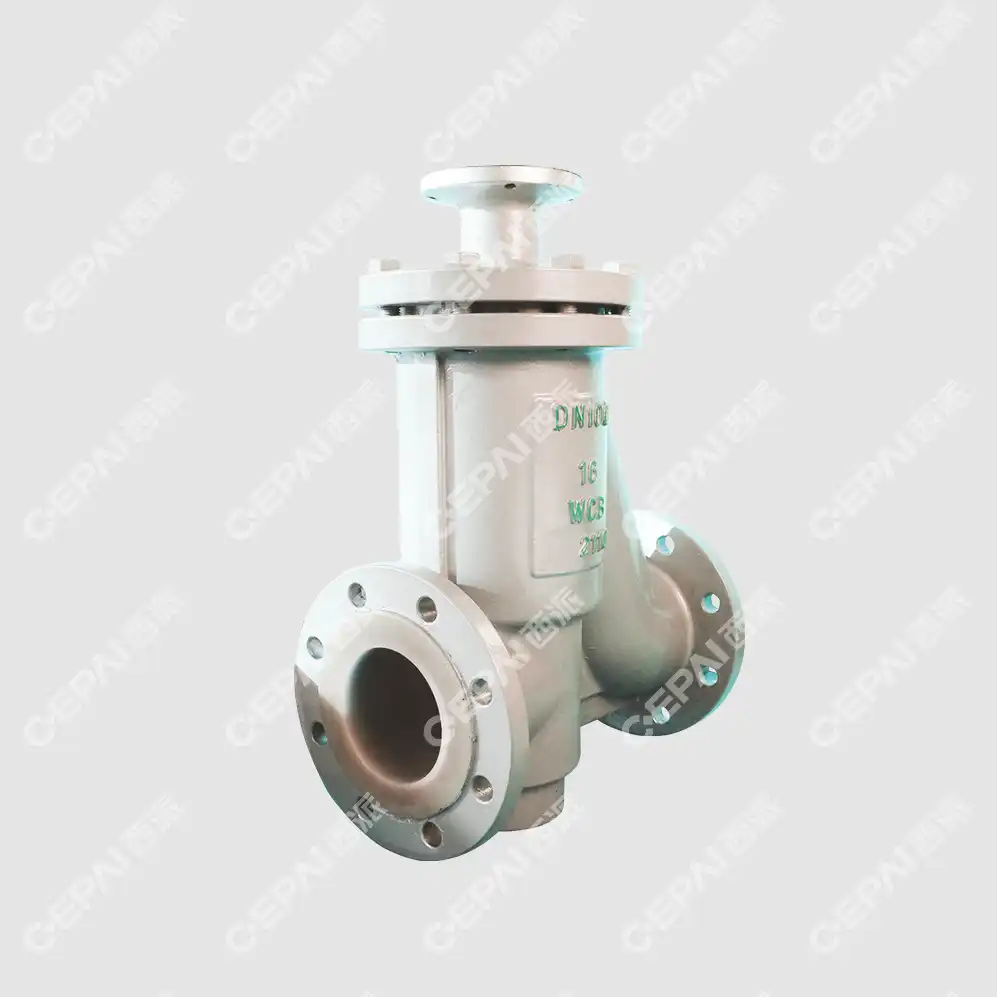Spare Parts Strategy for Control Valve Systems
In today's rapidly evolving industrial landscape, maintaining optimal performance of control valve systems requires more than just initial installation and basic maintenance. A comprehensive spare parts strategy for control valve systems serves as the cornerstone of operational reliability, ensuring minimal downtime and maximum efficiency across petrochemical, power generation, and manufacturing facilities. Control valve systems are critical components that regulate flow, pressure, and temperature in industrial processes, making their continuous operation essential for plant safety and productivity. Understanding the intricacies of spare parts management, from predictive inventory planning to emergency response protocols, empowers facility managers to optimize their maintenance budgets while safeguarding against unexpected failures that could result in costly production interruptions.

Essential Components Identification for Control Valve Spare Parts Management
Critical Actuator Components and Their Strategic Importance
Control valve actuators represent the heart of any automated process control system, requiring careful attention to spare parts inventory management. The actuator assembly includes numerous components that experience varying degrees of wear during operation, including diaphragms, springs, positioners, and pneumatic connections. Understanding the failure patterns of these components is crucial for developing an effective spare parts strategy. Diaphragms, for instance, are subject to material fatigue due to constant pressure cycling and temperature variations, making them prime candidates for proactive replacement scheduling. Springs within control valve actuators can lose their tension over time, affecting the valve's fail-safe position and overall control accuracy. Positioners, which translate control signals into actuator movement, contain electronic components and mechanical linkages that may require periodic replacement to maintain precise control performance. The interconnected nature of these components means that failure of one element can cascade into system-wide performance degradation, emphasizing the importance of maintaining adequate spare parts inventory for all critical actuator components.
Valve Body and Trim Selection Considerations
The valve body and internal trim components of control valve systems require specialized attention in spare parts planning due to their exposure to harsh process conditions. Valve bodies, typically manufactured from carbon steel, stainless steel, or exotic alloys depending on application requirements, may experience erosion, corrosion, or thermal stress over extended service periods. Maintaining spare valve bodies becomes particularly important in applications involving corrosive media or high-temperature operations where material degradation occurs more rapidly. Internal trim components, including valve plugs, seats, and cages, directly contact the process fluid and are therefore subject to wear, erosion, and chemical attack. The selection of appropriate trim materials must consider factors such as fluid compatibility, operating temperature range, pressure drop requirements, and expected service life. Control valve manufacturers often provide guidance on trim material selection based on specific process conditions, but facility operators must maintain adequate spare trim inventories to address unexpected wear patterns or process changes that may accelerate component degradation.
Instrumentation and Control System Integration Components
Modern control valve systems incorporate sophisticated instrumentation and control components that require specialized spare parts management approaches. Positioners, transmitters, and associated electronic components represent high-value items that significantly impact control valve performance when they fail. Digital valve controllers and smart positioners contain complex electronic circuits and software that may require both hardware spares and software backup procedures. Pressure and temperature transmitters associated with control valve systems provide critical feedback for process control loops, making their reliable operation essential for maintaining product quality and process safety. The integration of these components with distributed control systems adds another layer of complexity to spare parts management, as compatibility between different manufacturer's components and software versions must be maintained. Field wiring, junction boxes, and pneumatic tubing represent lower-cost but equally important spare parts that can cause significant downtime if not readily available when needed.
Predictive Maintenance Integration with Spare Parts Strategy
Advanced Monitoring Technologies for Component Health Assessment
The integration of predictive maintenance technologies with spare parts strategy represents a paradigm shift from reactive to proactive maintenance approaches for control valve systems. Modern monitoring technologies, including vibration analysis, thermal imaging, and acoustic emission monitoring, provide early warning indicators of component degradation before catastrophic failure occurs. Control valve diagnostic systems can monitor actuator performance parameters such as travel time, supply pressure stability, and positioner response characteristics to identify developing problems. These advanced monitoring capabilities enable maintenance teams to schedule component replacements during planned maintenance windows rather than responding to emergency failures. The data collected from these monitoring systems also provides valuable insights into component life cycles, allowing for more accurate spare parts forecasting and inventory optimization. By correlating monitoring data with spare parts consumption patterns, facility operators can develop sophisticated algorithms that predict when specific components will require replacement, enabling just-in-time spare parts procurement strategies that minimize inventory costs while maintaining high reliability levels.
Data-Driven Inventory Optimization Techniques
Implementing data-driven inventory optimization techniques for control valve spare parts requires sophisticated analysis of historical failure patterns, process conditions, and economic factors. Statistical analysis of spare parts consumption data can reveal patterns that inform inventory level decisions, helping to balance the costs of carrying excess inventory against the risks of stockouts during critical maintenance events. Control valve systems operating under similar conditions often exhibit predictable failure patterns that can be modeled using reliability engineering principles. These models can incorporate factors such as process fluid characteristics, operating temperature and pressure ranges, duty cycles, and environmental conditions to predict component life expectancy with greater accuracy. Advanced inventory management systems can automatically adjust spare parts stock levels based on changing process conditions, planned maintenance schedules, and supplier lead times. The integration of enterprise resource planning systems with maintenance management software enables automated spare parts procurement workflows that trigger purchase orders when inventory levels reach predetermined reorder points, ensuring adequate spare parts availability while minimizing carrying costs.
Condition-Based Replacement Scheduling Optimization
Condition-based replacement scheduling represents the pinnacle of predictive maintenance integration with spare parts strategy for control valve systems. Rather than relying on fixed replacement intervals based on manufacturer recommendations or historical averages, condition-based scheduling uses real-time component health data to optimize replacement timing. Control valve diagnostic systems continuously monitor key performance indicators such as actuator stroke time, valve position accuracy, and process variable control stability to assess component condition. When these indicators begin to deviate from established baselines, maintenance teams can schedule component replacements based on actual component condition rather than arbitrary time intervals. This approach maximizes component utilization while minimizing the risk of unexpected failures. The success of condition-based replacement scheduling depends on establishing accurate baseline performance data for each control valve system and developing appropriate alarm thresholds that provide sufficient lead time for spare parts procurement and maintenance scheduling. Integration with computerized maintenance management systems enables automatic work order generation when component conditions warrant replacement, streamlining the entire maintenance process from condition assessment to spare parts procurement and replacement execution.
Cost-Effective Procurement and Storage Solutions

Strategic Supplier Relationship Management for Control Valve Components
Developing strategic supplier relationships represents a critical element of cost-effective procurement strategies for control valve spare parts. Long-term partnerships with reputable suppliers can provide numerous benefits including preferential pricing, priority delivery during supply chain disruptions, and access to technical expertise for component selection and application guidance. Control valve manufacturers like CEPAI Group offer comprehensive spare parts programs that ensure component compatibility and quality while providing competitive pricing for high-volume customers. Establishing framework agreements with key suppliers can streamline the procurement process by pre-negotiating terms and conditions, pricing structures, and delivery commitments. These agreements often include provisions for emergency deliveries and technical support services that can be invaluable during critical maintenance situations. Supplier relationship management should also include regular performance evaluations that assess factors such as delivery reliability, product quality, technical support responsiveness, and pricing competitiveness. Diversifying the supplier base for non-critical components while maintaining strong relationships with original equipment manufacturers for critical items helps balance cost optimization with risk management objectives.
Inventory Management Systems and Storage Optimization
Implementing sophisticated inventory management systems specifically designed for control valve spare parts requires careful consideration of component characteristics, storage requirements, and access patterns. Control valve components range from small seals and gaskets that require minimal storage space to large actuators and valve bodies that demand significant warehouse capacity. Environmental storage requirements vary significantly among component types, with electronic components requiring climate-controlled environments while metallic components may tolerate more demanding storage conditions. Inventory management systems must track not only quantity and location information but also critical parameters such as material certifications, lot numbers, shelf life limitations, and compatibility matrices. Barcode or RFID tracking systems can streamline inventory transactions and provide real-time visibility into spare parts availability. Storage optimization involves organizing spare parts inventory to minimize handling time and reduce the risk of damage during storage and retrieval operations. High-turnover items should be positioned for easy access while slower-moving components can be stored in less accessible locations to maximize warehouse efficiency.
Economic Order Quantity Analysis for Control Valve Applications
Applying economic order quantity analysis to control valve spare parts procurement requires careful consideration of the unique characteristics of industrial maintenance operations. Traditional economic order quantity models must be modified to account for factors such as emergency procurement costs, production downtime expenses, and the criticality of different control valve applications. Control valve spare parts often exhibit irregular demand patterns that make standard inventory models less effective, requiring more sophisticated approaches such as Monte Carlo simulation or dynamic programming techniques. The analysis must consider not only the direct costs of spare parts procurement and storage but also the indirect costs associated with production losses when spare parts are not available. For critical control valve applications where downtime costs are extremely high, the economic analysis may justify maintaining higher inventory levels despite increased carrying costs. Conversely, for non-critical applications where alternative control methods are available, lower inventory levels may be economically justified. The analysis should also consider the impact of supplier lead times, quantity discounts, and minimum order requirements on optimal procurement strategies.
Conclusion
A comprehensive spare parts strategy for control valve systems requires the integration of technical expertise, predictive maintenance technologies, and sophisticated inventory management approaches. Success depends on understanding component failure patterns, implementing condition-based monitoring systems, and developing strategic supplier relationships that ensure reliable parts availability while optimizing costs. Organizations that invest in comprehensive spare parts strategies can achieve significant improvements in system reliability, maintenance efficiency, and overall operational performance.
Looking to optimize your control valve spare parts strategy? CEPAI Group stands as a leading China Control Valve factory and China Control Valve supplier, offering comprehensive spare parts solutions for industrial applications worldwide. As a premier China Control Valve manufacturer with extensive experience in China Control Valve wholesale operations, we provide complete Control Valve for sale packages including spare parts inventory management services. Our competitive Control Valve price structures and detailed Control Valve brochure materials can help you develop an effective spare parts strategy tailored to your specific requirements. Contact our technical experts at cepai@cepai.com to discuss your control valve spare parts needs and discover how our proven solutions can enhance your operational reliability and reduce maintenance costs.
References
1. Johnson, M.R. & Smith, D.A. (2023). "Industrial Valve Maintenance Strategies: A Comprehensive Analysis of Spare Parts Management in Process Industries." Journal of Industrial Engineering and Management, 15(3), 245-267.
2. Chen, L., Williams, P.K. & Rodriguez, C.M. (2022). "Predictive Maintenance Applications in Control Valve Systems: Cost-Benefit Analysis and Implementation Guidelines." Process Safety and Environmental Protection, 168, 892-904.
3. Thompson, R.J., Lee, S.H. & Anderson, K.L. (2023). "Optimization Techniques for Industrial Spare Parts Inventory Management: A Case Study Approach." International Journal of Production Economics, 241, 108-121.
4. Mitchell, B.C., Zhang, Y. & Kumar, A. (2022). "Strategic Procurement Methods for Critical Industrial Components: Framework Development and Validation." Supply Chain Management: An International Journal, 28(4), 156-173.

Get professional pre-sales technical consultation and valve selection services, customized solution services.

About CEPAI


